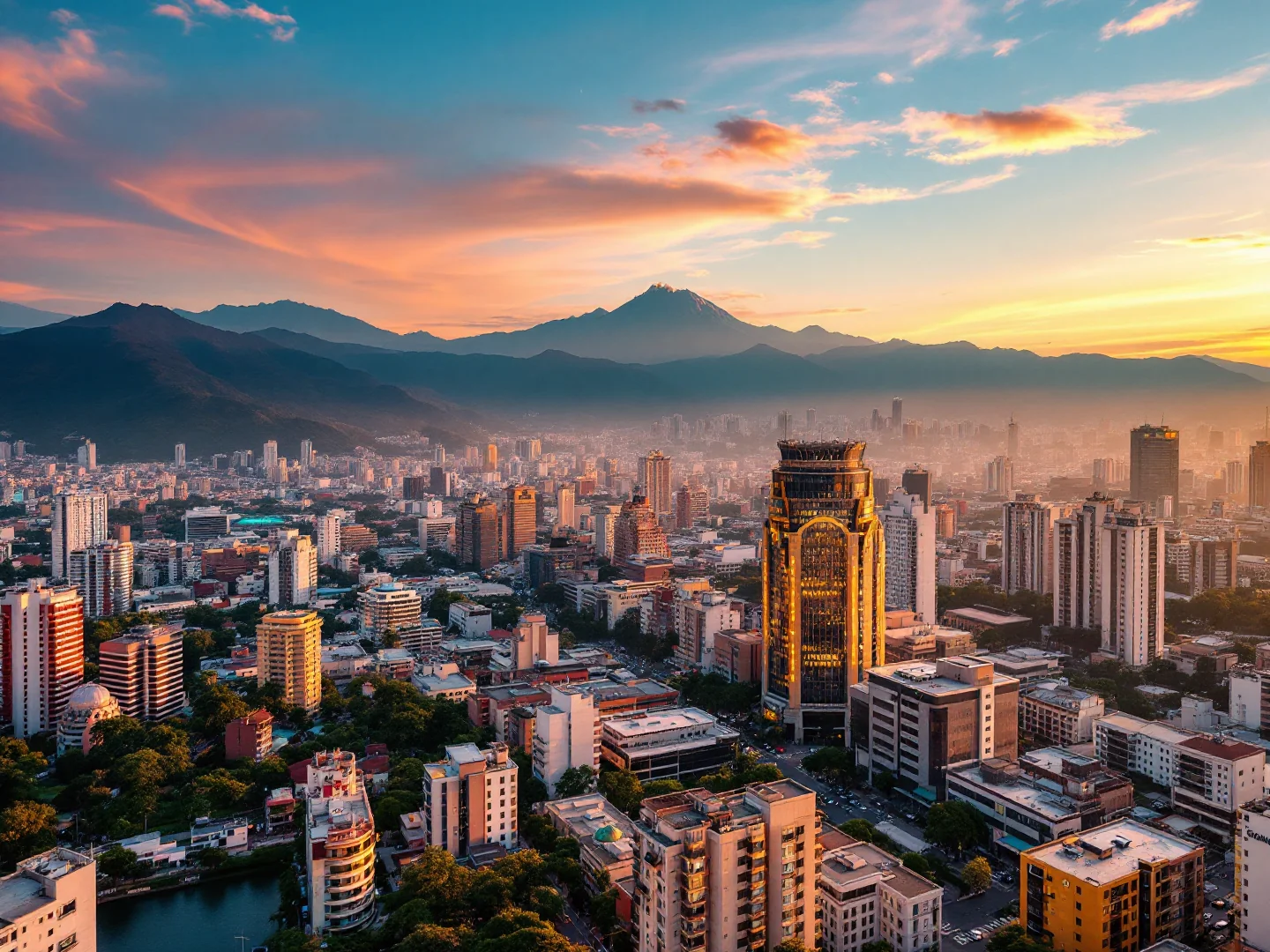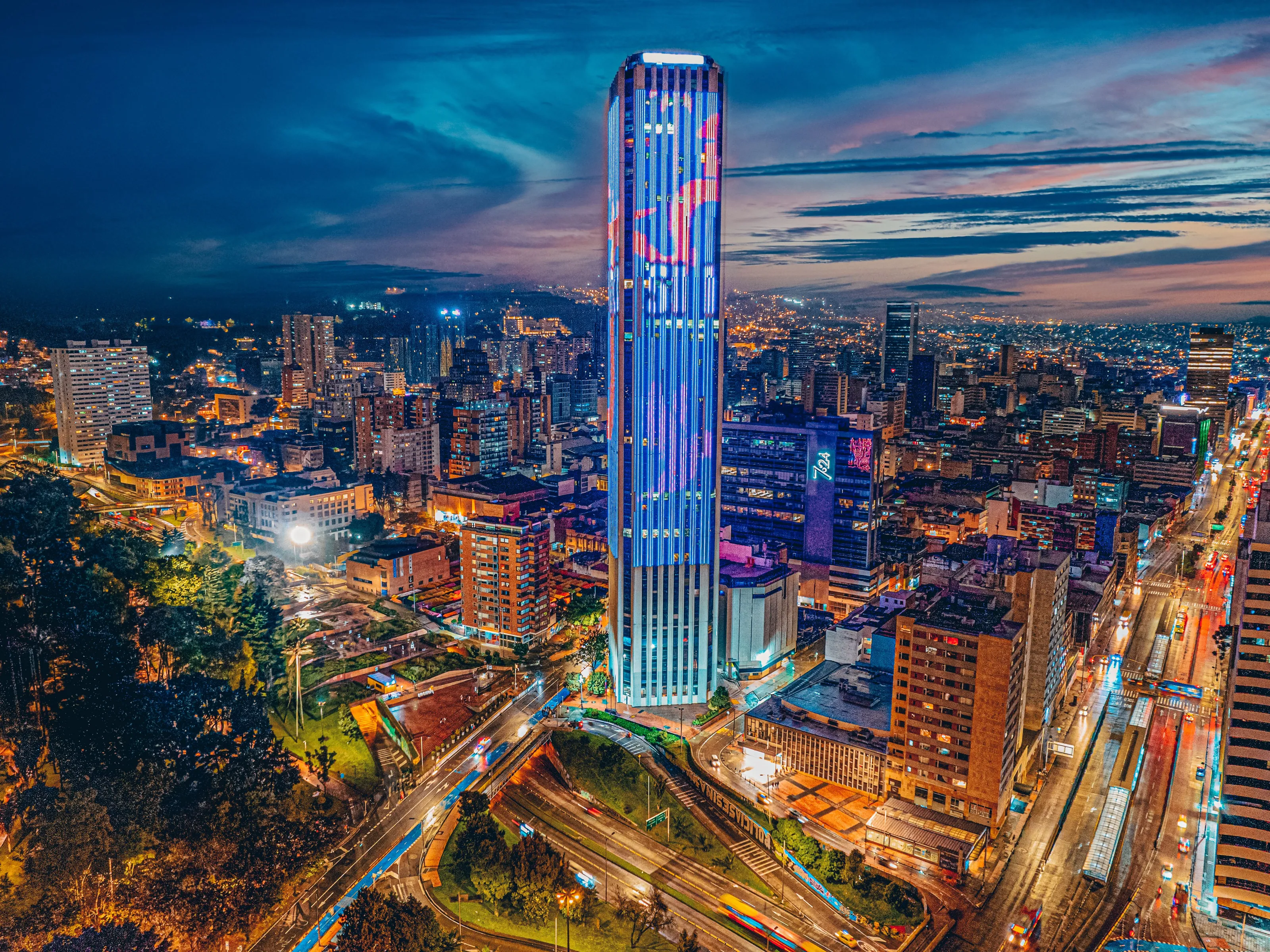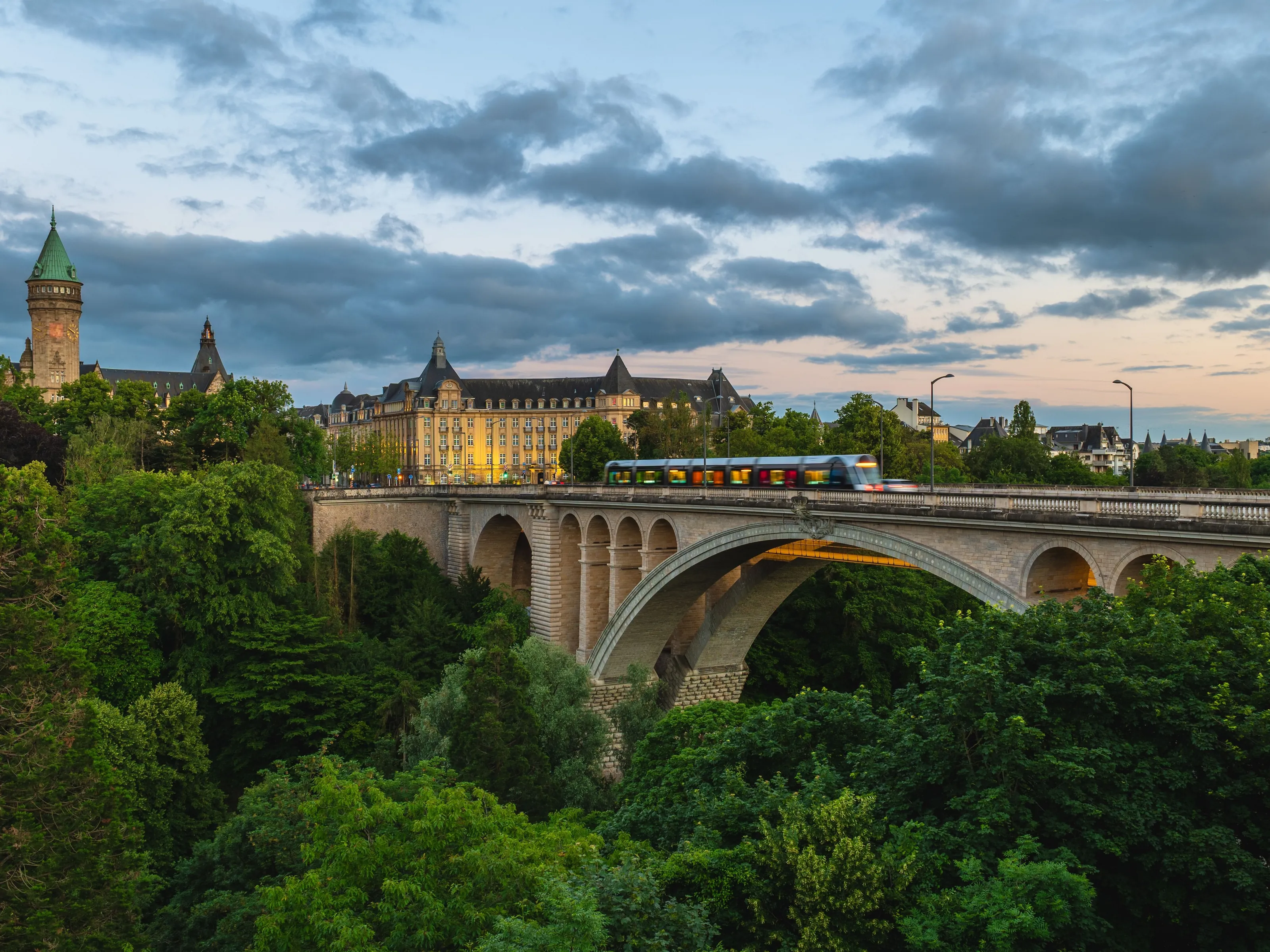Why Visit Quito?
Quito rises as the world's second-highest capital city at 2,850m elevation where Spanish colonial churches glitter with gold-leaf baroque altars, cobbled Old Town plazas preserve 16th-century architecture earning UNESCO status as one of the very first World Heritage Sites ever inscribed (1978), and the Equator line at Ciudad Mitad del Mundo lets you stand in both hemispheres at once—all framed by Andean peaks including snow-capped Cotopaxi volcano visible from rooftop terraces. The narrow city (pop. 2.8 million metro) stretches 50km north-south in a valley between mountains, dividing into Old Town's colonial treasures and New Town's (Mariscal) backpacker hostels and tour agencies.
Old Town concentrates unmissable sights: Plaza Grande anchors Independence Palace, Cathedral, and Archbishop's Palace where presidents wave from balconies, La Compañía de Jesús church (often called most ornate church in South America) dazzles with 7 tons of gold covering every inch of baroque interior ($5 entry), and Basílica del Voto Nacional offers tower climbs through steep ladders to Gothic spires for vertigo-inducing city views ($2 nave + $2–$3 for towers). San Francisco Monastery's vast plaza hosts indigenous craft vendors, while El Panecillo hill's 41m Virgin of Quito statue overlooks city (take taxi—neighborhood sketchy to walk). TelefériQo cable car (around $9 for foreigners, less for Ecuadorians) ascends Pichincha volcano to 4,050m—bring warm jacket, stunning views, altitude hits hard here, optional hike higher.
Yet Quito serves mainly as base for jaw-dropping day trips: Cotopaxi National Park (2hrs south, active volcano at 5,897m, horseback riding and hiking at 3,800m refuge), Mindo Cloud Forest (2hrs north, hummingbird feeders, waterfall hikes, zip-lining, chocolate tours), Otavalo Market (2hrs north, Saturday market—indigenous textiles, crafts, animals, most famous in South America), Quilotoa Loop (crater lake turquoise and remote), and Papallacta hot springs. Food scene mixes indigenous and colonial: locro de papa (potato soup), ceviche, cuy (guinea pig—traditional but touristy), and street food like empanadas de viento. New Town concentrates backpacker infrastructure—tour agencies, hostels, bars, restaurants on Plaza Foch.
Most travelers spend 2-3 days in Quito before heading to Amazon, Galápagos (expensive flights $300–$500 round-trip), or Pacific coast beaches. With no visa required for most nationalities (90 days), US dollar as official currency since 2000 (making budgeting easy), Spanish language (limited English), and eternal spring climate at 2,850m (14-23°C year-round but bring layers and rain jacket), Quito delivers colonial beauty, adventure access, and high-altitude acclimatization stop before Ecuador's highlights beckon.
What to Do
Old Town UNESCO Treasures
La Compañía de Jesús Church
Often called South America's most ornate church—7 tons of gold leaf cover every inch of the baroque interior including columns, altars, ceilings, and walls. Entry $5 Built by Jesuits over 160 years (1605-1765), blending baroque, Moorish, and indigenous craftsmanship. The gold literally glows in afternoon light streaming through windows. Allow 30-45 minutes to absorb the overwhelming detail. Photography permitted but no flash. Located on García Moreno street in the heart of Old Town. Go mid-morning (10-11am) or late afternoon (3-4pm) to avoid tour groups. Guides available for tips. This is Quito's must-see sight—even if you skip other churches, see this one.
Basílica del Voto Nacional Towers
Neo-Gothic basilica (1892-1988) with a twist—gargoyles are Ecuadorian animals (iguanas, tortoises, boobies). Entry is about US$2 for the basilica; add another US$2–$3 to access the towers and ladders up into the spires—steep metal ladders through the clock tower to open-air viewing platforms 100m up with vertigo-inducing city views. NOT for those afraid of heights—you literally climb between tower levels with nothing but a small railing. The thrill is part of the experience. The interior features brilliant stained glass and soaring vaults. Visit morning for clearest visibility—afternoon clouds often obscure volcano views. Allow 1 hour total. The legend says Ecuador will end when this church is completed—it's purposefully left slightly unfinished.
Plaza Grande & Presidential Palace
Quito's main square (Plaza de la Independencia) surrounded by the Presidential Palace, Cathedral, and Archbishop's Palace. Free to walk the square. The Presidential Palace offers free guided tours Monday-Saturday (book online weeks ahead or try walk-in early)—see ornate state rooms and historical exhibitions. The changing of the guard ceremony happens Mondays at 11am. Cathedral entry $4—impressive but less stunning than La Compañía. Plaza Grande is the heart of Old Town, with shoe-shiners, vendors, and pigeons—safe during day but sketchy after dark. Sit on a bench, people-watch, and soak in the colonial atmosphere.
High-Altitude Adventures
TelefériQo Cable Car to 4,050m
Gondola ascending Pichincha volcano from 3,000m to 4,050m—one of the world's highest cable cars. Entry around $9 for foreigners (less for Ecuadorians). The 18-minute ride offers stunning views over Quito sprawling below and the Avenue of Volcanoes beyond. At the top: thin air (bring layers—it's cold and windy), short walking paths, and optional hike to Rucu Pichincha summit (4,700m, 1.5-2 hrs up, challenging at altitude). Most visitors just walk around the viewing platform, visit the café, and ride down. Go on clear mornings (8-10am)—afternoons often cloud over. Skip if you're feeling altitude symptoms. The base station has restaurants. This is acclimatization preparation for higher treks.
Mitad del Mundo Equator Monument
Stand on the painted yellow line marking 0°0'0" latitude where a GPS reads North/South simultaneously. The main monument and museum (Ciudad Mitad del Mundo complex, $5 entry) is actually 240m off the true equator (GPS technology improved since the French expedition placed it in 1736), but it's the iconic photo spot. Bus from Ofelia Metrobus terminal ($2 1 hour) or taxi ($25 round-trip). The complex has exhibits on indigenous cultures and the French expedition. More interesting: walk 5 minutes north to Intiñan Museum ($5) which sits ON the actual equator—they demonstrate fun experiments (water draining opposite directions, balancing eggs on nails, reduced weight/strength on the line). Touristy but enjoyable. Allow 2-3 hours total.
Day Trips from Quito
Cotopaxi National Park & Volcano
Active stratovolcano (5,897m, second-highest in Ecuador) with perfectly conical snow-capped peak—one of the world's most beautiful mountains. Day tours ($50–$80 8-10 hours) typically include transport, guide, park entry, and lunch. You'll drive to Limpiopungo Lake (3,800m) for acclimatization walks, then to the parking area at 4,600m. Most tours hike to José Ribas Refugio at 4,800m (1 hour up, challenging at altitude—slow pace essential). Views from the refuge over glaciers are breathtaking. Some tours include horseback riding or mountain biking down. Bring warm clothes, sunscreen, water. Only for those already acclimatized in Quito—altitude sickness is real. Clear weather: December-January and July-August. Cotopaxi erupted as recently as 2015—currently stable.
Otavalo Market & Indigenous Culture
Saturday market in Otavalo (2 hours north) is South America's most famous indigenous market. Arrive by 8-9am when the Plaza de Ponchos fills with textiles, alpaca sweaters, jewelry, musical instruments, and crafts. Bargaining expected and fun—offer 50-60% of asking price and negotiate up. September-May are best months (dry). Beyond shopping: visit nearby Peguche waterfall (30 min walk from town), San Pablo Lake (20 min drive, boating and lakeside lunch), and indigenous villages. Full-day tours ($40–$60) handle logistics. DIY: bus from Quito Terminal Norte ($3 2 hours)—buses depart frequently. The Saturday animal market (separate location, early morning) is fascinating but not for sensitive animal lovers.
Mindo Cloud Forest
Biodiversity hotspot 2 hours northwest—hummingbird paradise with 450 bird species, orchids, butterflies, waterfalls, and adventure activities. Day trips ($50–$70) or stay overnight. Activities: hummingbird watching at feeders (dozens of species zipping around), waterfall hikes (Tarabita cable crossing, $5), zip-lining through canopy ($20–$30), butterfly farm, chocolate farm tours (Ecuador produces world-class cacao). Mindo is warmer and more humid than Quito (subtropical cloud forest, 1,200m elevation)—bring rain jacket and insect repellent. Best for nature lovers and birders. Can be rainy year-round but driest December-March. Some lodges offer night walks to spot frogs and nocturnal animals.
Gallery
Travel Information
Getting There
- Airports: UIO
Best Time to Visit
June, July, August, September, December
Climate: Moderate
Weather by Month
| Month | High | Low | Rainy days | Condition |
|---|---|---|---|---|
| January | 18°C | 9°C | 19 | Wet |
| February | 18°C | 9°C | 21 | Wet |
| March | 17°C | 9°C | 31 | Wet |
| April | 17°C | 8°C | 29 | Wet |
| May | 17°C | 8°C | 17 | Wet |
| June | 17°C | 7°C | 15 | Excellent (best) |
| July | 17°C | 7°C | 15 | Excellent (best) |
| August | 19°C | 7°C | 10 | Excellent (best) |
| September | 19°C | 7°C | 12 | Excellent (best) |
| October | 19°C | 7°C | 14 | Wet |
| November | 18°C | 8°C | 24 | Wet |
| December | 16°C | 8°C | 29 | Excellent (best) |
Weather data: Open-Meteo Archive (2020-2024) • Open-Meteo.com (CC BY 4.0) • Historical avg. 2020–2024
Budget
Excludes flights
Visa Requirements
Visa-free for EU citizens
💡 🌍 Traveler Tip (November 2025): Plan ahead: December is coming up and offers ideal weather.
Practical Information
Getting There
Mariscal Sucre International Airport (UIO) is 18km east of city center (opened 2013, modern). Airport bus to city $2 (45min-1hr). Taxis $25–$35 (45min, use official airport taxis or pre-book with hotel—agree price before leaving). Uber works (cheaper, $15–$25). International flights via Madrid, Amsterdam, or US gateways (Miami, Houston, Atlanta). Many connect through Lima, Bogotá, Panama City. Quito is main gateway to Galápagos (flights $300–$500 round-trip).
Getting Around
Old Town and New Town (Mariscal) each walkable internally, but 5km+ apart. Ecovía/Metrobús/Trole BRT buses: cheap ($0), useful but crowded and watch for pickpockets. Taxis: inexpensive ($2–$5 short trips, $8–$12 between Old/New Town)—use ONLY official yellow taxis with meters or app-based (Cabify, EasyTaxi). Uber technically illegal but widely used. NEVER hail taxis from street (robbery risk). For day trips: book tours ($40–$80 including transport) or rent car ($40–$60/day). Walking at night risky—take taxis after dark. TelefériQo cable car ($9) separate attraction.
Money & Payments
US Dollar (USD, $). Ecuador adopted dollar in 2000—makes budgeting easy for Americans. Bring small bills ($$1$5$1020)—change scarce, $50/$100 bills often rejected. ATMs everywhere. Cards accepted at hotels, upscale restaurants, malls; cash needed for street food, markets, buses. Tipping: 10% restaurants (sometimes included), $1–$2 for small services, round up taxis. Budget $30–$60/day for mid-range travel—Ecuador affordable.
Language
Spanish is official. Very limited English outside upscale hotels and tour agencies. Translation apps essential. Indigenous languages (Kichwa) in rural areas. Young people in tourist zones have basic English. Learn: Hola, Gracias, ¿Cuánto cuesta?, La cuenta por favor. Communication challenging in local restaurants and markets. Signs increasingly bilingual in tourist areas.
Cultural Tips
Altitude: take it easy first 2 days, hydrate constantly, coca tea helps. Safety: don't flash valuables, watch bags in crowds, take taxis at night (even 3 blocks—seriously), avoid sketchy neighborhoods, use hotel/app taxis only. Indigenous culture: Otavalo Market and surroundings—respect traditions, ask before photos, bargaining expected. Food: try almuerzo (set lunch $3–$5—soup, main, juice, dessert, incredible value). Cuy (guinea pig): traditional Andean food, touristy, not everyone's thing. Traffic: chaotic, crossing streets is adventure. Ecuadorian time: 15-30min late is normal. Dress: bring layers (cool mornings, warm afternoons, cold nights), rain jacket (afternoon showers common). Sunday: many museums closed, churches open. Quito as base: most spend 2-3 days here then continue to Galápagos, Amazon, Baños, coast, or Peru border.
Perfect 3-Day Quito Itinerary
Day 1: Old Town UNESCO Sites
Day 2: TelefériQo & Mitad del Mundo
Day 3: Cotopaxi or Otavalo Day Trip
Where to Stay in Quito
Old Town (Centro Histórico)
Best for: UNESCO colonial architecture, churches, museums, plazas, historic, touristy, watch belongings
Mariscal (New Town)
Best for: Backpacker hub, hostels, tour agencies, Plaza Foch nightlife, restaurants, safe tourist zone
La Floresta
Best for: Bohemian cafés, art galleries, quieter, residential, safe, alternative scene, hipster vibe
La Carolina Park area
Best for: Modern Quito, business district, shopping malls, upscale hotels, parks, safer but less character
Frequently Asked Questions
Do I need a visa to visit Ecuador?
What is the best time to visit Quito?
How much does a trip to Quito cost per day?
Is Quito safe for tourists?
What should I know about altitude in Quito?
Popular Activities
Top-rated tours and experiences in Quito
Ready to Visit Quito?
Book your flights, accommodation, and activities






